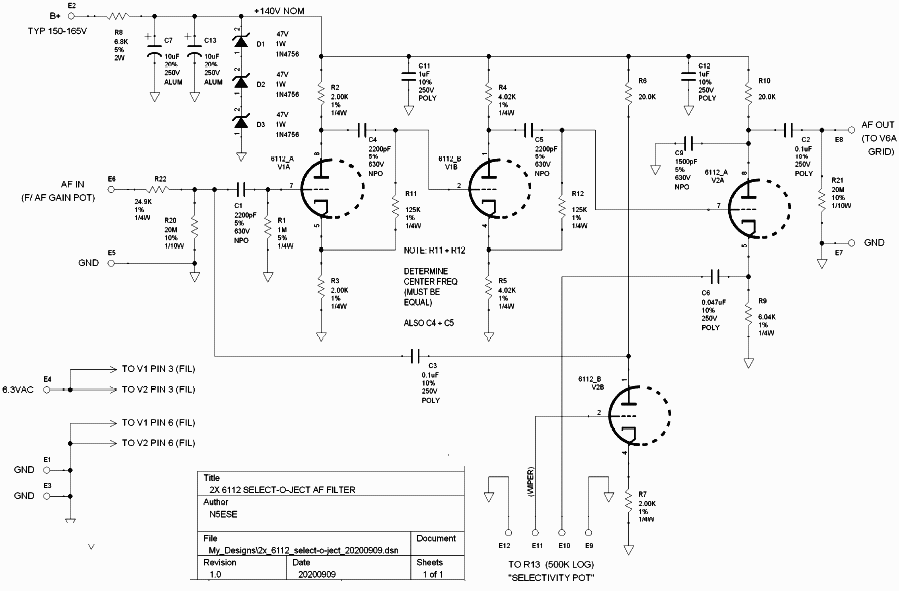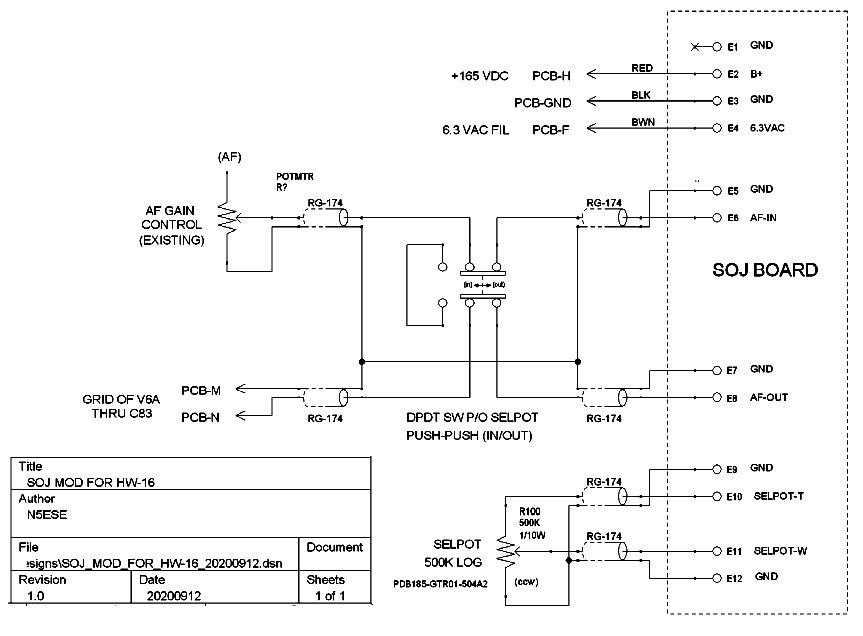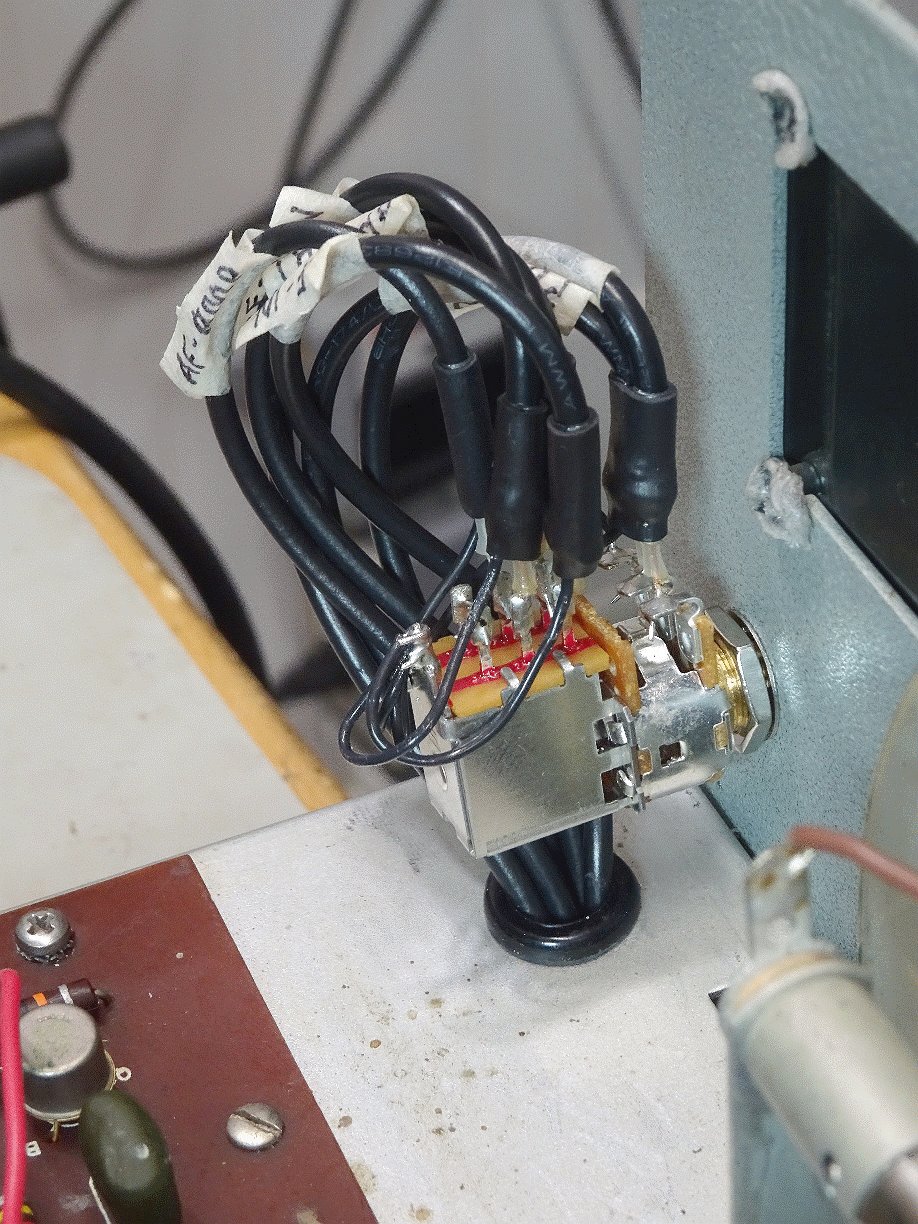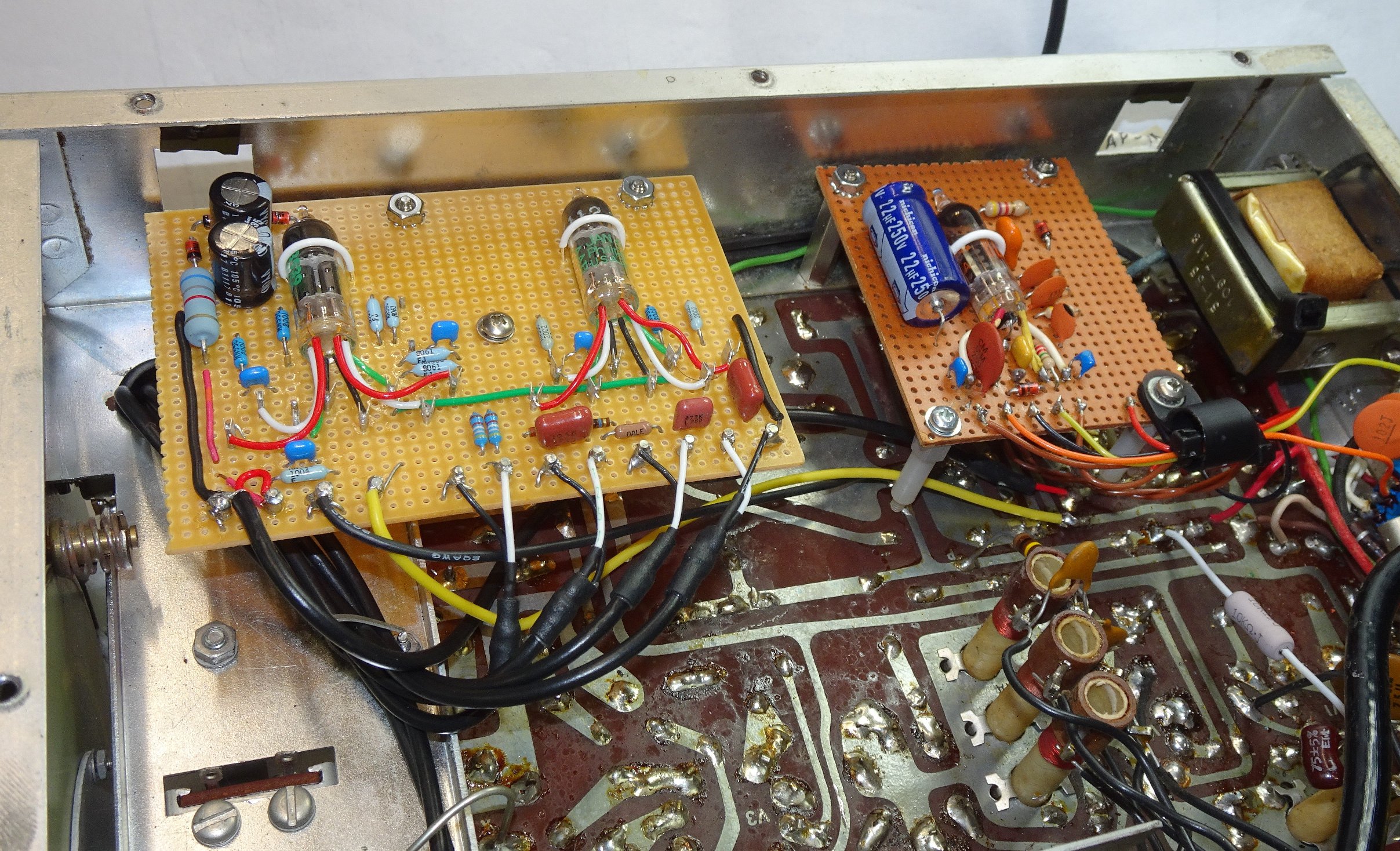N5ESE's Select-O-Ject Tube-Type Active Audio Filter (2020)
(for my Heathkit HW-16)
(click on any picture to see larger version)
(click on any picture to see larger version)
The Heathkit HW-16 is a tube-based CW receiver-transmitter intended for the Novice licensee back in the 1960's & 70's.
It had a crystal-controlled transmitter and an amazingly sensitive receiver. It had a 2-crystal IF filter
which was optimized for CW and worked fairly well, but it didn't have a lot of skirt selectivity. Strong adjacent
signals could be a problem, as well as local hash noise. I suspected that a good audio filter would provide
some relief, but I didn't want to go the solid-state route, choosing instead to honor the vintage tube-technology
of this classic rig.
Back in the day, the quintessential active audio filter was the "Select-o-Ject" (sometimes called the "SOJ").
Because The HW-16's PCB layout doesn't really lend itself to adding tube sockets (and I would have needed two),
The schematic is essentially identical to the 1951 version. In fact, the 6112 pencil tube is a near-equivalent
To assure clean and stable plate voltage to the SOJ, and to make certain we don't exceed the pencil tube's plate specs,
So that we didn't have to have both a switch and a pot on the front panel (which would be two holes instead of one),
The SOJ perf board was placed under-chassis in the HW-16. In the picture below, you can see the
The Select-O-Ject takes a little practice to get the knack of it, but once you do, you'll prefer it over other
Because of the way the SOJ is tuned and tweaked, it is difficult to get a good set of frequency response
In conclusion, the Select-O-Ject seems to be a good addition to the HW-16. I don't need the SOJ most
73,
It was originally described as an adjunct external add-on for the poor-performing 1940's cheapo receiver du jour
and was even incorporated into the National NC-125 Receiver. Take a look at this article from the 1951 ARRL Handbook
(my birth year HIHI). This seemed like a good candidate for the HW-16, and so I breadboarded one up.
Hey - it made a difference, especially on very weak signals. Perfect!
I decided to implement my own version using subminiature pencil-tubes on a perf-board form factor. Schematic below:

(click on any picture to see larger version)
to a 12AX7, albeit with lower maximum plate voltage and a 6.3V filament instead of 12.6V. So I had high confidence
the tube substitution would work. The original SOJ was switchable between peak filter and notch filter, but for
simplicity's sake, I implemented it with only peak filtering. This meant I could use a single small control knob on
the front panel, with a switch to enable or disable the SOJ.
we utilize a brute-force zener regulation scheme consisting of three 47V zeners in series.
The HW-16 is wired as follows to incorporate the SOJ:

we found a pot with a push-push shaft and a DPDT switch. This enabled us to leave the SOJ's selectivity setting in
the optimal position, and still turn it on and off at will. This worked out very nicely. This pot is somewhat unique,
but it is still available in distributorship (as of 2023) - Bourns p/n PDB185-GTR01-504A2. The switch on this pot has the
function of routing audio from the AF Gain pot to subsequent circuitry (either feeding the SOJ or bypassing it).
Because these are low-level audio signals which are subject to hum pickeup, we make sure all audio signals are
routed in RG-174 coaxial (shielded) wire. See picture below:

(click on any picture to see larger version)
SOJ on the left, and the sidetone board on the right:

(click on any picture to see larger version)
OPERATION
audio filters. Much like a regen control, turning it one way (in this case, left) reduces the gain and increases
the audio bandwidth. Turning it the other way increases the gain until it breaks into oscillation (trust me, you'll know).
For optimum selectivity, you'll want the pot setting just a gnat's hair before that point. Right there, a weak
CW signal will pop out of the background and surprise you. You may have to re-adjust your tuning slightly to make
sure the signal you want to hear stays in the bandpass and at its exact pitch (somewhere near 900 Hz to
match the HW-16's crystal filter).
curves (with the SOJ "in"). I attempted it, but I'm not certain the curves properly reflect the effect I
observe between the headsets in real time. Still, take a look -here - , if you like.
of the time, but it has nonetheless saved many a ragchew during QSB conditions.
Monty N5ESE
dit dididit dit
Overseer: Monty Northrup ...
![]() ... leave e-mail ...
... leave e-mail ...